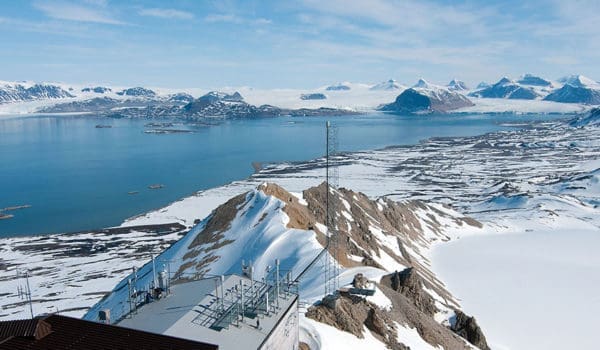The Norwegian Government’s 2012 white paper on climate change states that research on the effects of global warming and measures to address the problem will continue to be a high priority, along with research on the climate system itself. Research is also an important priority in the Government’s High North strategy. But is the same effort being made in environmental monitoring, the cornerstone of climate research?
Budgets for monitoring remain unchanged

The fact is that whereas the white paper signals that investment in research is good, budgets for monitoring remain unchanged. Environmental monitoring form the foundation for climate and environmental research, and the need for basic monitoring data relevant to the North is on the increase. Even with a little growth over the past five years, the total monitoring budget for the Norwegian Climate and Pollution Agency, KLIF, is lower today than it was twenty years ago. When the numbers are adjusted according to the consumer price index, KLIF received in excess of NOK 90 million for monitoring in 1990, compared to just under NOK 77 million in 2011.
The tight budget means that KLIF must make difficult choices, and under this assessment, the loser is monitoring that does not have as much relevance for immediate management efforts, but has great value to Norway’s longer-term national knowledge needs and research. To fund new priorities, the Agency now proposes to reduce the monitoring of acidifying substances. As an institution, NILU is very concerned that an almost 40-year-old and very valuable monitoring series may now be lost. The result will be a monitoring programme that does not meet international requirements for atmospheric monitoring.
Part of this programme was originally established to monitor acid rain, but the use for the data is far broader than that. The data provide basic information about the composition of the Earth’s atmospheric, along with details of the climate system and the effects of climate change. This includes information on aerosols, which represent a major uncertainty in our understanding of the impact of different atmospheric components on the climate. This is actually quite common for many atmospheric monitoring programmes, where the results are often socially beneficial in ways that were not anticipated when the monitoring was originally set up.
Marginal costs
Monitoring has marginal costs when seen in relation to potential consequences for the environment and human health. Any measures we take to avoid or reduce negative environmental effects will involve costs at a completely different and higher level. It is therefore essential to see monitoring, research and environmental measures in a larger social context, to assess the true value of long time series measurements.
In light of all of this, it should be quite clear that monitoring budgets must be increased. Furthermore, long-term monitoring programmes should not be expected to compete every year for funding from the same budgets that fund more acute monitoring needs. Basic environmental monitoring should be protected and should have a long-term approach that is both responsible to the needs of the government to understand how the climate and our environment are changing over time, and to ensure that this information contributes to long-term capacity building. In this way, monitoring will be useful to both society at large and government administrators.
This annual magazine presents NILU’s research highlights from 2011. Virtually all the projects described rely on monitoring data in some way. They illustrate in just a small way the substantial environmental significance of environmental monitoring.
